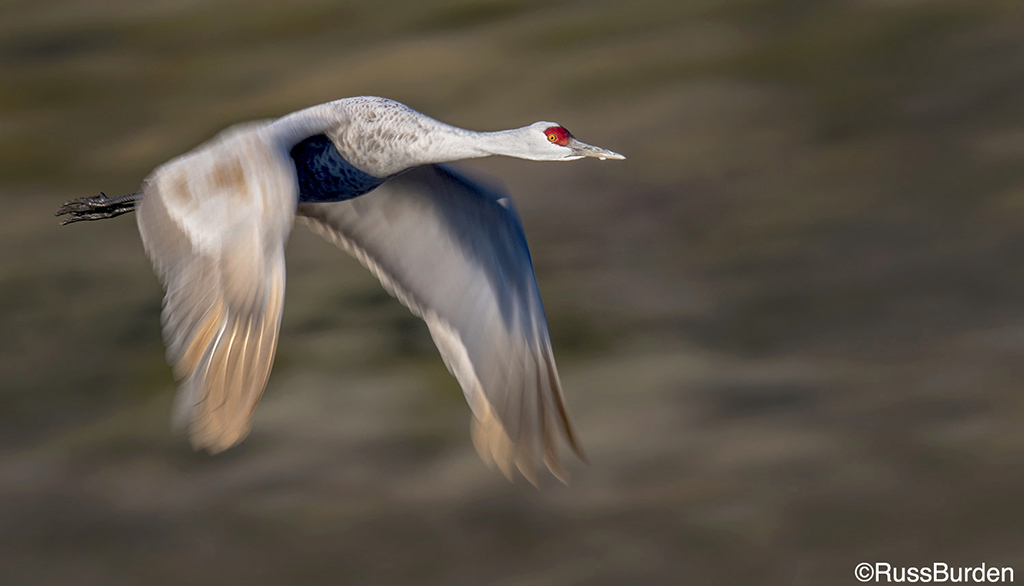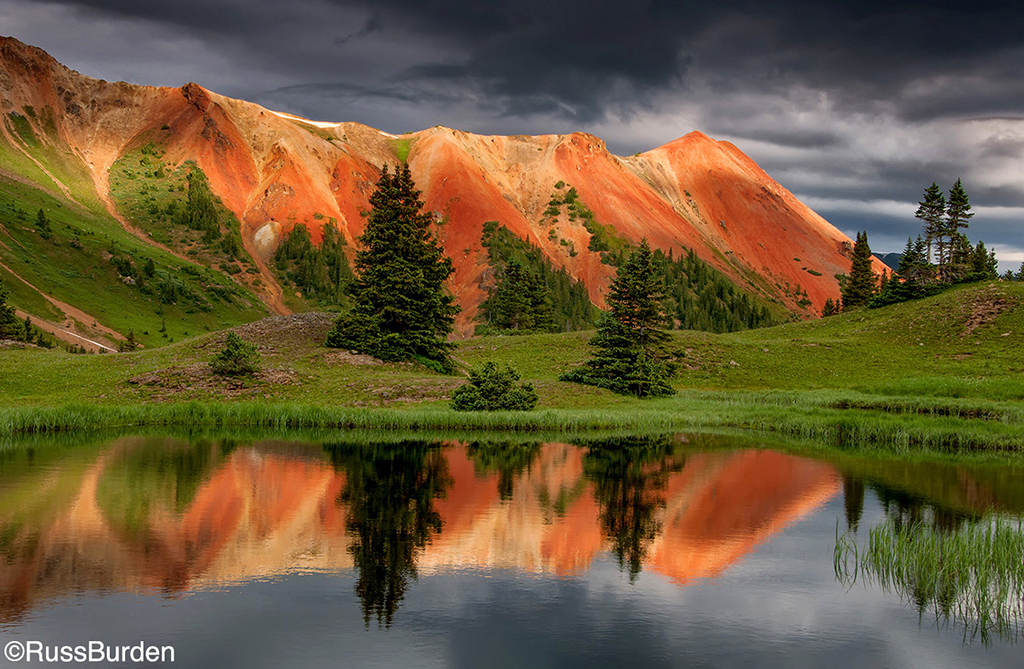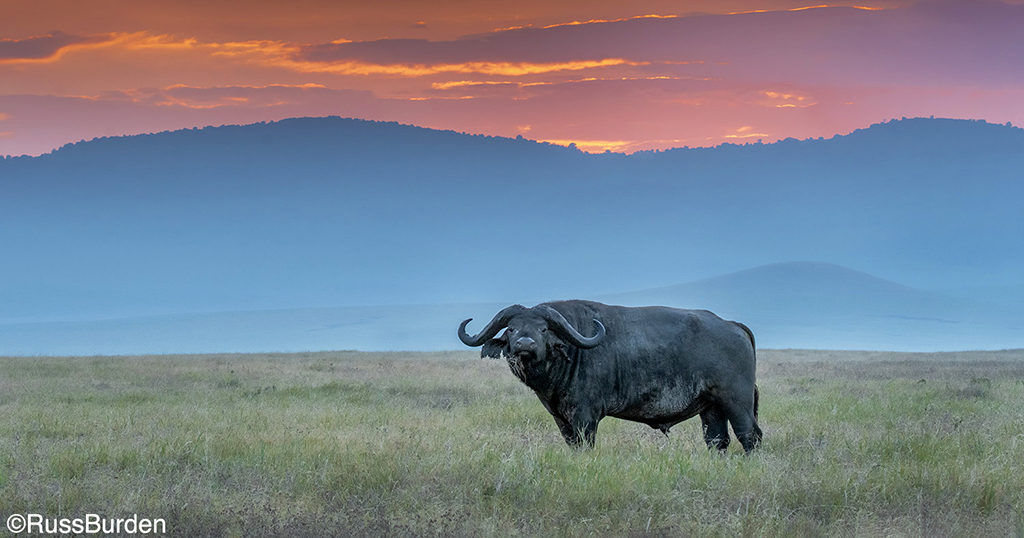Advertisement
Advertisement
Read Next

10 Action In Nature Quick Tips
As you know, nature photography isn’t...
Critically Sharp Captures
To obtain excellent-quality, tack-sharp...
Get Drenched In A Downpour Of Pixels

Get Drenched In A Downpour Of Pixels
Over 70 percent of the Earth’s...
The Amount Of Light Dictates The Strategy
Thick gray clouds, dawn, interiors,...Advertisement


The Bridge To Black & White
Alpine Tarn, Tyndall Basin, Kings Canyon National Park, Sierra Nevada Mountains, California. I was amazed when I came upon this scene on the way to the summit of Split Mountain early one morning. I couldn’t have arranged the foreground rocks any better with those lines leading in from each corner and that sharp vertical rock in the center. With the black-speckled gray granite, this image almost looks the same in color as it does in black-and-white, and it was like viewing it in monochrome when I composed it. Split Mountain was creating a long shadow over this basin, so the clear, blue sky adds a blue color cast to the scene that doesn’t improve it at all. In this case, it was easy to simply eliminate what little color there was to create a more visually powerful image where the viewer can concentrate on the wonderful, clean lines of the composition.
I still remember the moment, many years ago, when Photoshop first introduced Black & White adjustment layers. Prior to its release, I read all about this feature and found it amazing that I would soon have the ability to create new black-and-white images from my existing color files without affecting the original image. I had dabbled in black-and-white film photography before the days of Photoshop, but never to a serious degree because I always preferred to capture my landscape images in full color.
As soon as I installed the new version of Photoshop, I immediately dove in. Since I was already familiar with adjustment layers, it didn’t take long to get up to speed. Once I became proficient at making these new black-and-white conversions, I created a folder of my favorite color film images and then quickly reviewed each one using this new feature to determine which images had good potential in monochrome. I was selling prints on my website at the time and realized that one of the most remarkable aspects of this new technology was the fact that I could now create, almost overnight, large numbers of new images to offer my customers. I soon doubled the size of my print galleries by adding new black-and-white categories, and they quickly became some of my best-selling images.
At the most basic artistic level, I’ve always preferred black-and-white compositions to color. At the beginning of my career, my coffee table was always covered with books by Ansel Adams, Brett Weston and others, showcasing their black-and-white photography. I was surprised one day to learn that Adams photographed in color as well. As beautiful as the images were, they didn’t have the raw impact of his black-and-white work. The same goes for the images I captured myself. Even in the color-soaked country of southern Utah, where I cut my teeth on landscape photography, my favorite images were often the black-and-white versions.
Moraine Lake, Valley of the Ten Peaks, Banff National Park, Alberta, Canada. This is a good example of big, clean, simple lines with bright whites and rich, dark blacks providing a full range of contrast, which is what you always need for a successful black-and-white composition. While this image works well in color, it’s much more powerful when the color is eliminated. With all the gray rock and black shadows plus the white cloud, the only color in the image is the blue sky and its reflection, so it’s mostly a black-and-white image to begin with.
Color can often be distracting when it comes to analyzing the pure compositional qualities of a photograph. By eliminating color, the image is distilled to its elemental components of line, shape, form and tonality, with only black, white, gray and the contrast between them. Without color “getting in the way,” it becomes very apparent whether or not you have a worthy composition. If a color image isn’t very compelling when converted to black-and-white, then perhaps the color itself is the only thing the image has going for it, which is not what we’re after; our best images always have strong compositions. It’s too easy to simply pump up the colors with that saturation slider to enhance an image that perhaps wasn’t very compelling in the first place. If the composition isn’t there, no amount of color enhancement will save it. Black-and-white photography teaches you to concentrate only on the shapes, forms and tonalities, which combine to produce a beautiful composition.
Since I was such an early adopter and strong advocate of black-and-white conversions, I’m always surprised today by how few of my workshop guests have actually tried it. Perhaps they’re intimidated by the conversion process. It’s actually quite easy, and you don’t need to purchase any plug-ins or learn about adjustment layers. If you’re comfortable processing your digital files in Lightroom, you’re already 90 percent of the way there; all the tools you need are right there in the Develop module. If you’re working with scanned film images and you’re comfortable with Photoshop’s adjustment layers, I’d suggest performing your conversions with Photoshop. If you’ve never done a conversion, I’ll provide some basic instruction a little later in this article.
Shooting Black-and-White In The Field
Once you begin converting your color files, you’ll soon learn which field conditions work best for monochrome images. Compositions with clean, simple lines are what you’re after; those with lots of little details and clutter don’t work as well. For a compelling black-and-white image, you’ll also need a wide range in contrast with bright whites and deep, rich blacks. Keep in mind that you can increase the contrast range of a black-and-white image much more than you could with the color version—which will quickly look over-processed—while the black-and-white just looks more dramatic. Once you learn these basic concepts, you’ll realize that specific outdoor lighting conditions that don’t always work well for color photography, such as midday light, can provide excellent results in monochrome.
The Cockscomb, Grand Staircase Escalante National Monument, Utah. This image is all about simple, clean lines with no extraneous clutter, so it’s an ideal candidate for a black-and-white conversion. It only has two elements: the sandstone patterns and the dark silhouetted peak in the background. The low-angle light greatly accentuates those cross-bedded sandstone layers and provides for a wide range of contrast with the deeply shadowed mountain. The color version is nice, but even here in the color-saturated canyons of Southern Utah, black-and-white is often more dramatic.
I’ll provide two examples of this. The first would be autumn-color photography at high noon with puffy clouds and a dark blue sky with bright yellow foliage; imagine Oxbow Bend on the Snake River in Grand Teton National Park. While the color version of this scene would indeed be beautiful, these are absolutely ideal conditions for a very strong black-and-white composition.
Another example would be a hazy summer scene with low-contrast light, muted colors and a sky filled with clouds having some definition within them, such as Glacier National Park with a little smoke in the air. These conditions probably wouldn’t provide good results for color photography, but if you were to convert the color file to black-and-white and then increase the overall contrast, especially in the sky and clouds, and darken those muted grays until you had some true blacks to eliminate the haze, you could end up with a very dramatic black-and-white composition.
As far as specific camera settings for black-and-white photography, there really aren’t any other than perhaps simply using a polarizing filter to pre-darken the sky. It may sound counterintuitive, but when you’re out in the field capturing images, it’s better to capture your potential black-and-whites as a color file rather than setting your camera to monochrome. By starting with a color image for your conversion, you will have a much higher degree of flexibility than you will if you start with a black-and-white file. Part of the process is adjusting the conversion of each color independently, allowing you to fine tune the image to a high degree. By capturing in color and converting to black-and-white, you’ll also have the bonus of two image files of the same scene.
Big Cottonwood Creek, Wasatch Mountains, Utah. An early-season snowstorm with temperatures near freezing caused the snow to stick to these overhanging branches, which makes this composition so interesting. I captured it in full shade, so even though snow actually has no color, the color version has a strong blue cast, which isn’t bad in itself, but this cast is not important and can easily be eliminated. The strong lines of the branches and the deep contrast between the white snow and black rocks provides that wide range in contrast that every successful black-and-white image requires.
Creative Choices When Converting
If you’re already comfortable using Lightroom, it’s easy to get started with your first conversion. Go to the Library module and choose an image you’d like to convert. Pick one that you’ve already processed in color since it will have the basic adjustments applied to it. Preferably choose one that will convert well, such as an image with autumn colors, puffy white clouds and a deep blue sky.
The first step is to create a virtual copy of the image by right-clicking it. This virtual copy will become your black-and-white file, which will now live in your library, right there beside the original color file. Next, open the Develop module and at the top of the Basic panel, click “Black & White,” after which all color will disappear from the image. Now you can begin the actual black-and-white adjustments.
The first adjustment you want to apply, if you haven’t already done so for the color version, would be to set the Tone Curve to “Medium Contrast.” That’s usually a good starting point. Then go back to the Basic panel and play with all the sliders to see how they affect the image. You’ll see that the Clarity slider is one of the most powerful tools for black-and-white, especially for a sky with clouds, but use it sparingly for any non-sky portions of the image because it can quickly produce a harsh, grainy feel if overdone. The Contrast slider is also a very powerful tool for adding drama throughout the image.
Needle Mountain, San Juan Mountains, Colorado. There’s a lot going on in this image, and it verges on being a bit cluttered, but there are really only three main elements: the trees, the mountains and the sky. With the brilliant autumn colors that day, this is an example of a very colorful image that also works extremely well in black-and-white. Once again, I prefer the monochrome version, but the color version’s not far behind. It’s important not to dismiss the potential of a color-drenched image like this when it comes to deciding how it might look in black-and-white. This is also a good example of how well autumn-hued scenes can work when converted. You can make those bright yellow leaves even brighter when converted, and the dark, brooding mountains provide that wide contrast level every black-and-white image needs. What really makes this image work, of course, are those spectacular rim-lit clouds filling the sky. I couldn’t have asked for a better sky.
You can use these Basic panel sliders to make adjustments across the entire image, but I prefer to make these same adjustments on selected portions of the image with the Brush Tool and then use the same sliders within that tool. As an example, use the Brush Tool to select the sky portion of the image with those nice puffy clouds. Then play with the sliders to make the sky darker and the clouds brighter.
Instead of using the Basic panel as described above, you could also go down to the Black & White sliders below the Tone Curve and drag the sliders left and right to see how they affect the image. If you drag the Blue slider to the left, it will darken the areas in the image that had blue in them in the color version. If you had yellow or red leaves, drag those color sliders to the right to lighten the leaves. The only drawback to these sliders is that they can introduce a lot of grain and noise to the image, mostly when you over-darken areas. This will become very apparent if you use the Blue slider to make the sky very dark. For the highest-quality file, it would be better to darken the sky using the Basic panel sliders in conjunction with the Brush Tool or to use the Tone Curve. A better use for the Black & White sliders is to lighten areas, such as those yellow leaves, but don’t overdo it because these lighter tones will quickly blow out. The main message here is, as easy as it might be to adjust the file using only the Black & White sliders, use them sparingly and enlarge the image to 100 percent to make sure the image is not being degraded.
Once you become somewhat proficient with these tools, you can quickly open and convert other images to see which ones have potential. Just remember to make virtual copies of each color file before beginning the conversion process. It’s also a good idea to add the keywords “B&W” or “Black & White” to these virtual copies so you can quickly pull them up later.
If you have scanned film files you’d like to convert, you could either import them into Lightroom or open them in Photoshop. If you prefer working in Photoshop and you’re at all familiar with adjustment layers, open your color file and then at the bottom of the Layers palette, click on the half-black/half-white circle and choose “Black & White.” You’ll then see all the various color sliders, just like in Lightroom. Drag these sliders left or right to darken or lighten the colors in the original color file, but also use these sliders sparingly when darkening portions of the image to avoid introducing grain. It’s better to make most of these adjustments using the Curves tool. Levels can also work well to produce bright whites and deep blacks, but be careful not to make the image look too harsh by overdoing it.
Black-and-white conversions can be a great way to hone your skills, both in the field and on the computer, and it’s a great project for cold, stormy days when you can’t get outside.
Get Photoshop! Image editing and compositing.